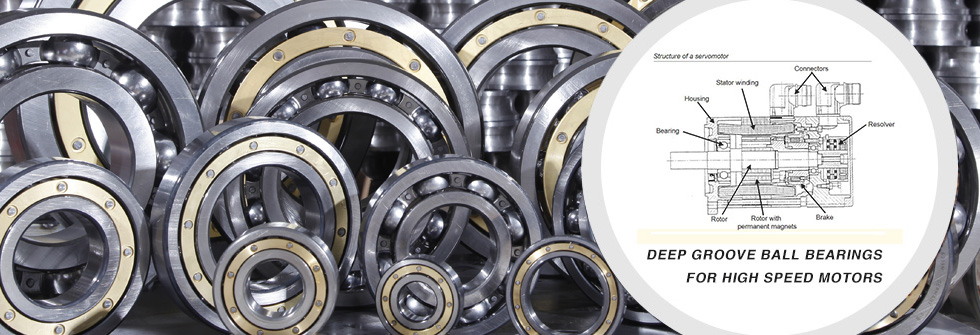Insulated rolling bearings – protection against electrical corrosion
2016-04-27Electrically insulated rolling bearings feature electrical insulation that is built into the bearing, providing reliable protection against current passage and electrical corrosion. Typical applications are electric motors, generators and other electrical machines. The Austrian manufacturer NKE Austria GmbH offers electrically insulated rolling bearings in several versions. In this article, it explains the causes of passage of electrical current through rolling bearings, damage symptoms and countermeasures, properties and production processes of electrically insulated bearings.
A difference in electrical potential between the outer and inner ring of a rolling bearing can lead to a damaging electric current that permanently damages the bearing’s raceways and impairs its running characteristics. A current flow results in electrical discharge in the contact zone between the rolling elements and the inner or outer ring. This, in turn, causes local melting of the surfaces. The result: pitting, material transfer and local microstructural damage through thermal stress. At least a very thin layer of the eroded surface is re-hardened, making it extremely hard and prone to cracking. This process is called electrical corrosion and often affects bearings in electromechanical applications, such as generators and electric motors, but also machines that are powered by electric motors, such as pumps and gearboxes. In addition, the electric discharge renders the lubricant useless. The base oil and additives contained in the lubricant oxidise, resulting in the characteristic black colour of the lubricant. Premature ageing permanently impairs the lubricant’s ability to form a separating layer between the metal surfaces. The bearing’s damaged functional surfaces and the loss of lubrication action result in a rapid loss of the bearing’s functionality.
The main reasons for current discharge are known. Asymmetries in the magnetic flux of an electrical machine give rise to a low-frequency voltage between the shaft and the housing, which results in a flow of current through the rolling bearings. Such a passage of current can also result from the use of unshielded asymmetrical electric cables if the earth connection of the machine is ineffective. Another cause is the use of frequency converters: The operating principle of many frequency converters is based on pulse width modulation (PWM) and generates high-frequency common mode voltage, which also results in a passage of current through the rolling bearings. Lastly, electrostatic charging of the shaft and housing followed by discharge through the rolling bearings is also a possible cause.
Typical signs of electrical corrosion include grey, tarnished tracks in the raceways and on the rolling element surfaces. Melt craters or fluting is also discernible, mainly on the raceway surfaces. Damage due to current discharge usually manifests itself in increased running noise.
Linqing Nine Star Bearing Science & Technology Co., Ltd
( Insulated bearing, Hybrid ceramic bearing and Brass cage DGBB)
Follow us via E-mail info@jxkjzc.com; Website www.ninestarbearing.com.











